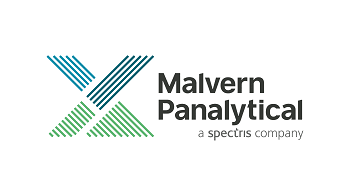Anyone working in these fields is aware that producing the ideal paint, the cleverest coating, or the most opulent laundry detergent depends on having the proper formulation.
Patricia Kidd, Segment Marketing Manager for Chemicals and Coatings, talks about how Malvern Panalytical’s solutions are advancing sustainability in the production of chemicals and coatings, the significance of using the right components and knowing the right formulation.
The Main Challenges and Opportunities in Today’s Chemicals and Coatings Industry
The markets for coatings and chemicals are enormous and expanding regularly, and the quest for more sustainable solutions is a problem that ties all divisions of these sectors together.
Although the usage of solvents, the existence of volatile organic compounds (VOCs), and the demands for extremely low toxicity levels are all subject to tight regulation, chemicals and coatings continue to face these challenges.
Additionally, supply chain issues include limited transportation options and growing raw material costs, which are shared by several businesses today.
The prospects are enormous for businesses that can overcome these difficulties. Customers are looking increasingly for bio-based products that are long-lasting, highly effective, and even have smart functionality.
This growing market need will benefit manufacturers that can create more sustainable, cutting-edge formulas and optimize their production process.
How Malvern Panalytical Helps Customers Address these Challenges and Capitalize on the Opportunities in the Market
Manufacturers must continuously monitor their materials throughout production to guarantee compliance with strict standards and boost operational efficiency.
A wide range of technology can assist businesses in analyzing particle size and shape, elemental content, crystal structure, and other factors. These characteristics directly impact elements like toxicity, use, viscosity, and even color.
For example, the XRF tools are a wonderful option for keeping an eye on coating toxicity levels. To determine particle size, Mastersizer equipment uses laser diffraction (which influences hue, tint strength, coverage, and gloss in paint).
The OMNISEC tool can be used to determine the molecular weight of polymers, which is crucial for tracking viscosity.
They also provide a wide selection of X-Ray diffraction (XRD) devices that can be used to determine a formulation’s chemical makeup. There is a Malvern Panalytical instrument for each step of the manufacturing process for chemicals and coatings.
The Biggest Trend in the Chemicals and Coatings World
Making things “smarter” and making manufacturing processes more sustainable are the two main themes that can be seen nowadays in practically every industry.
Although sustainability is crucial to these sectors, many businesses are currently driven by it. The potential for change is examined in every step of the procedure.
To address this, producers are turning to bio-based solvents, improving the durability and coverage of their coatings (to use less product per application and increase service life), and using biodegradable binders.
Many fascinating innovations in the chemicals and coatings sectors right now will help make these products “smarter.”
Manufacturers are increasingly seeking ways to improve chemical and coating capabilities, whether for high-performance coatings that can withstand space flight, electrical inks that allow the printing of functioning circuits, or light-emitting paints that can brighten houses.
Recognizing that these solutions are aspirational rather than merely utilitarian is critical.
Ensuring the Solutions Live Up to the Environmental, Social, and Governance (Esg) Expectations
On the governance side, security comes first. Toxin regulations, for example, are in place to safeguard end users, and manufacturers of chemicals and coatings take their duty to guarantee safety extremely seriously.
Malvern Panalytical may be of assistance here. To ensure that products are secure and appropriate for use, the tools can be used to assist manufacturers in the measurement and tracking of the chemical composition of various formulations.
Regarding environmental requirements, the products support the creation of more sustainable solutions in several ways.
First, researchers give manufacturers the resources they need to formulate their goods properly, enabling them to consistently produce high-quality, stable solutions that work and last well.
Second, technologies increase the efficiency of production processes, resulting in less waste, better utilization of raw resources, and a smaller overall carbon footprint. The clients are able to demonstrate compliance with industry rules in this way.
Finally, researchers ensure they meet their high environmental standards, which implies that the instruments automatically meet the ESG needs of clients.
The Future for Chemicals and Coatings
The future of chemicals and coatings is quite promising. These industries have always exhibited consistent development, and that increase does not appear to be slowing down anytime soon.
There is an increasing desire for innovative and environmentally friendly solutions, from inks, paints, and adhesives to household goods and smart coatings. Organic electronics, optoelectronics, and conducting polymers, which are already playing an increasing part in daily lives, will continue to witness considerably more innovation.
Meanwhile, the market’s need for greater sustainability will significantly change how manufacturers produce chemicals and coatings. The idea that Malvern Panalytical’s solutions will aid in this shift is exhilarating.

This information has been sourced, reviewed and adapted from materials provided by Malvern Panalytical.
For more information on this source, please visit Malvern Panalytical.